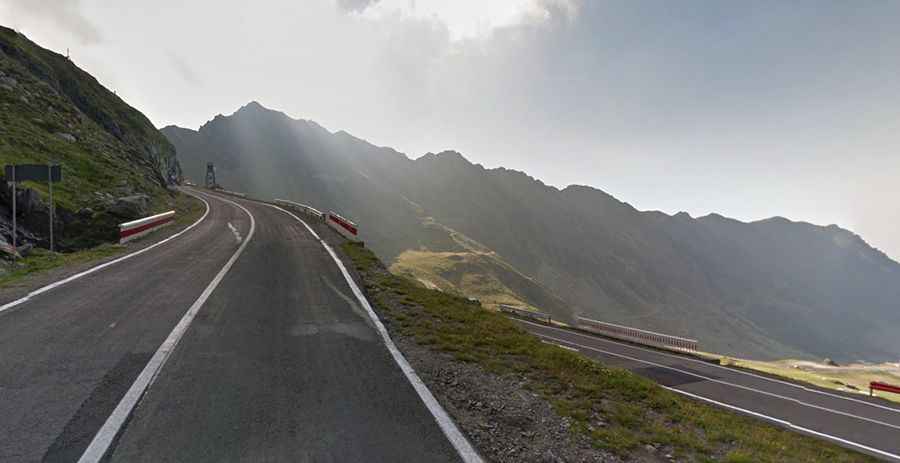Transfagarasan is a thrilling road through Dracula's territory
Transfăgărășan is a very scenic road located in Romania. Spooky dark tunnels (the longest is more than 800 meters and pitch black), plus endless twists and turns make for a thrilling mountain ride through Dracula’s territory.

How long is Transfagarasan road?
The road, officially known as DN7C, is 90km (55.92 miles) long, featuring 80 hairpin curves, 5 tunnels, and over 500 small bridges. The road offers a great driving experience in the country, owing a lot to the endless winding parts and fantastic rugged mountainous scenery. The most spectacular route is from the North. It is a winding road, dotted with steep hairpin turns, long S-curves, and sharp descents. Due to the topography, the average speed is around 40 km/h.
Is Transfagarasan road worth it?
It's one of the most scenic drives in the world. The Transfăgărășan is a very challenging drive and a magnet for drivers. The road provides access to Bâlea Lake and Bâlea Waterfall. Travelers can find food and lodging at several hotels or chalets (cabane) along the way. To sleep, there are numerous villages and towns on both sides of the highway offering accommodation for every budget. The hotels on or just off the highway itself tend to be expensive. Several campsites can also be found. The road’s difficult spelling and pronunciation are a preview of what any driver can expect from this thoroughfare. Among the attractions along the southern section of the road, near the village of Arefu, is the Poienari fortress. The castle served as the residence of Vlad III the Impaler, the prince who inspired Bram Stoker’s Dracula character. There is a parking area and a path to the ruins.
When was Transfagarasan road built?
Built as a strategic military route, the 90 km of twists and turns run north to south across the tallest sections of the Southern Carpathians. It links Transylvania and Wallachia and the cities of Sibiu and Pitești and was constructed between 1970 and 1974, during the rule of Nicolae Ceaușescu. It was built mainly with military forces, at a high cost both financially and from a human standpoint—roughly 6 million kilograms of dynamite were used on the northern face, and the official records mention that about 40 soldiers lost their lives in building accidents, and it came as a response to the 1968 invasion of Czechoslovakia by the Soviet Union. Ceaușescu wanted to ensure quick military access across the mountains in the event the Soviets attempted a similar move into Romania.
Is Transfagarasan road open?
This road, also known as Ceausescu's Folly, tops out at 2.042m (6,699ft) above sea level, by Pasul Bâlea. It is covered with snow between late October and late June and usually is closed during this period, meaning that it is available only during a few summer months to delight the eye with outstanding landscapes that Romania usually meets its visitors. Depending on the weather, it may remain open until as late as November. It may also be closed, at times, because of weather conditions (it occasionally snows even in August). There are signs at the town of Curtea de Argeș and the village of Cârțișoara that provide information on the passage.
When is the best time to drive the Transfagarasan road?
Located in the central part of the country, it’s one of the famous Romanian high-altitude roads. Check the weather forecast on the day you head for the drive, as it is closed in bad weather. Generally speaking, it is safe to plan your trip between mid-June and mid-September. The road that traverses the Carpathian Mountains will send chills down your spine, especially when you reach the top. At the summit, there is a very beautiful alpine lake (Capra-Bâlea Lac) and souvenir shops, restaurants...
What's Bâlea Pass?
Pasul Bâlea is a high mountain pass at an elevation of 2.042m (6,699ft) above sea level, located on the boundary of Argeș and Sibiu counties. Set high in the Făgăraș Mountains, the highest mountains of the Southern Carpathians, the pass is the highest point on the Transfăgărășan (DN7C National Road).
Where was Ghost Rider: Spirit of Vengeance filmed?
The road was closed for several days in November 2010 because it was featured in Ghost Rider: Spirit of Vengeance, with Nicolas Cage. The scenes were filmed on some sections between km 56 (HPP) and km 62 (The dam). The road has become one of the preferred settings for drive tests, photo shootings, and auto commercials for sports cars and motorcycles in recent years. Several international car brands have chosen this Romania’s high-altitude road as the setting for their commercials and drive tests, and sports car owners all over the world have come to feel the thrill of driving on it.
Is Transfagarasan road paved?
The road is totally paved. It runs between the highest peak in the country, Moldoveanu, and the second highest, Negoiu. There are large sections of non-barriered road with sheer drops of over 1000 ft. It has more tunnels (a total of 5) and viaducts than any other road in Romania. Near the highest point, at Bâlea Lake, the road passes through the longest road tunnel in Romania which is not lighted (884 m).
Tunnels on the Transfagarasan
| km | Length (m) | Width (m) | Year of construction |
| 116 | 884 | 4.4 | 1972 |
| 57 | 15.95 | 6 | 1962 |
| 57 | 51.47 | 6.2 | 1962 |
| 60 | 117.1 | 6 | 1962 |
| 61 | 97.89 | 7.1 | 1962 |